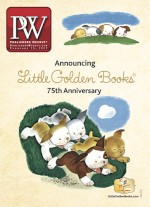Although 2016 wasn’t the best year ever at Diamond Book Distributors, which distributes graphic novels, books, and pop culture merchandise to the book trade, it came pretty close. “It’s wasn’t our best year,” said Kuo-yu Liang, v-p of sales and marketing at DBD. “That was 2013. But 2016 was just a hair short of that year [and] it was our best year ever in the U.K. market.”
DBD distributes the graphic novels of 40–50 publishers—among them Dynamite Entertainment, Oni Press, Valiant, and Z2 Comics—in North America. DBD is also the exclusive U.K. distributor of DC Entertainment, and the international distributor of Boom! Studios, Fantagraphics, and other houses.
Last year at this time, Liang predicted that the third and final volume of March (Top Shelf), Rep. John Lewis’s graphic memoir of the civil rights movement, would be “the biggest book of the year,” and it turned out to be “even bigger than I thought it would be.” Not only was it a bestseller but it won the comics industry’s Eisner Award (for the second volume), the National Book Award for Young People’s Literature (for the third), and an unprecedented four literary awards at the ALA Midwinter Meeting in Atlanta. The series nearly sold out after President Donald Trump criticized Lewis, prompting many people to get it to show their support of the civil rights icon.
Other graphic novels that did well in 2016 included Monstress by Marjorie Liu and artist Sana Takeda (Image), a steampunk fantasy about a teenage girl with mysterious psychic power. “It’s been out a year and sales are climbing,” Liang said. He also cited Brian K. Vaughan and Cliff Chiang’s Paper Girls (Image), a time-traveling sci-fi adventure “whose sales numbers are phenomenal, driven by word of mouth.” Backlist bestsellers last year, Liang said, included the Walking Dead graphic novels (Image), Brian K. Vaughan’s Saga (Image), and Alan Moore’s The Killing Joke (DC).
The most exciting development in 2016 was acceptance of graphic novel by independent booksellers, retailers who have generally been cautious, if not skeptical, in embracing graphic novels and manga, unlike national bookstore chains. After “10 years of missionary work to convince indie retailers to sell graphic novels and manga,” Liang said, the category has reached an informal milestone. After attending this year’s ABA Winter Institute, Liang reported that “graphic novels have officially reached acceptance by independent booksellers.” He explained: “There were more than 600 booksellers at the Winter Institute, and all of them said they were selling graphic novels of some kind—either superhero comics, graphic memoirs, or something. Now we get questions about how to sell them better.”
Another area of growth in 2016 was DBD’s international business, which Liang said had a “big year.” He noted: “The main challenges are problems with the currency exchange or civil wars.” Sales, he said, were good in Latin America, specifically Colombia, Guatemala, and Mexico. Eastern Europe, he said, “is a bright spot,” with Romania and Poland doing well, in addition to markets in the Australia, India, Turkey, and the U.K. that “are growing fast.”
Looking ahead, Liang cited several graphic novels he expects to do well: Afar (Image), a fantasy series by Leila del Duca and Kit Seaton; Jo Kelly and Ilya’s Kid Savage (Image), a sci-fi adventure; Princess Princess Ever After by Katie O’Neill (Oni), an alternative fairy tale in which a dark-skinned princess with a Mohawk comes to the aid of a grateful white princess; and Snotgirl by Bryan Lee O’Malley and Leslie Hung (Image), the story of a fashion blogger with terrible allergies.
And though Liang was “disappointed” that the New York Times announced it would drop its graphic books bestseller lists in January, he said that retailers at the Winter Institute “didn’t care about the Times bestseller lists.” He added: “They said having knowledgeable staff was more important, and praised services like Indie Next [the indie bestseller list] and Edelweiss [the online book catalogue service], which let booksellers see what other stores are saying about graphic novels. They were far more interested in reviews and old-school publicity than the Times lists.”



 Volume 264
Issue 07
02/13/2017
Volume 264
Issue 07
02/13/2017





